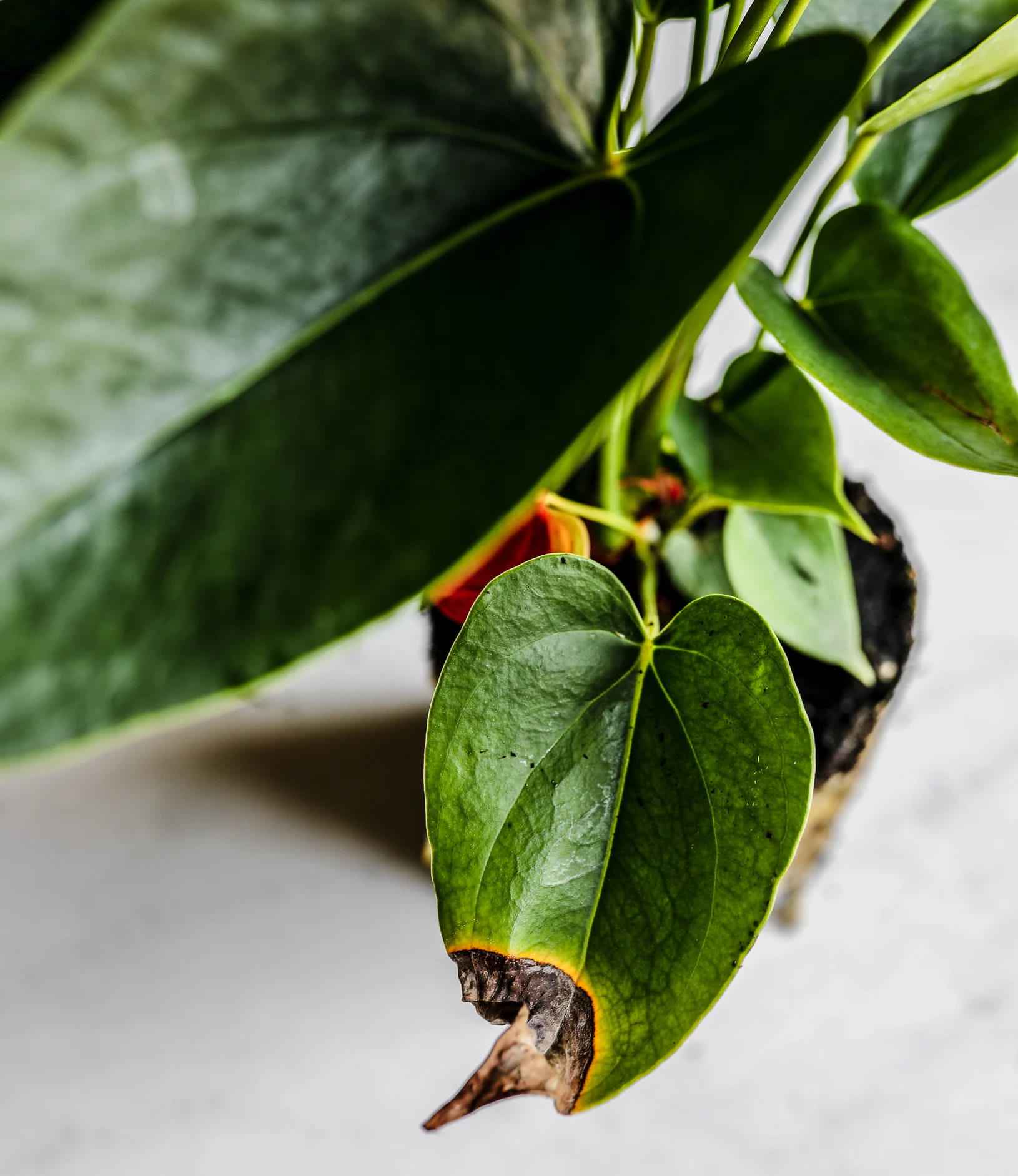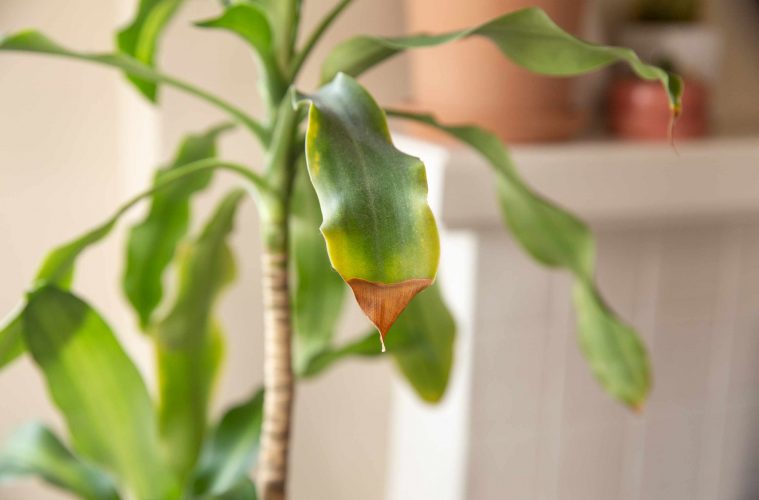During winter, your houseplants likely won’t look as good as they do during the warmer months. New leaves are few and far between, and you may notice some discolouration or lack of blooms, depending on the plant.
While some change is normal, it’s important to look out for signs of more serious growth problems at this time.
Signs to look out for during winter that may indicate your houseplants need care:
Yellow leaves
Yellow leaves on houseplants can be a concern, but it’s often a natural part of plant ageing. However, if many leaves are turning yellow, it might indicate a moisture issue. Too much or too little water could be the culprit, so you’ll need to check the plant’s soil moisture level.
If your watering habits are good, other factors such as cold air drafts or inadequate light might be to blame. Nutrient imbalance, often due to overfertilisation can also lead to yellow patches. Beware of blotchy yellow spots, as they suggest a fungal infection.
Brown leaves
Brown, crispy leaf tips can signify underwatering or extreme temperature changes. High-humidity plants may struggle in low-humidity conditions.
Leaf scorch, while rare indoors, could occur if your plant receives intense sunlight and insufficient air circulation.
Stunted growth
Stunted growth can be a symptom of inadequate light or overwatering leading to root rot. If your plant has remained in the same spot for a long time and isn’t growing, it might need repotting.

Unsplash
Drooping leaves
Drooping leaves usually point to watering issues. Underwatering and overwatering can both cause this, so checking the soil’s moisture will guide you on adjusting your watering routine.
Dropping leaves
If your plant is shredding leaves, it could be due to environmental changes or ageing. Other culprits could be incorrect watering, extreme temperature, inadequate light, physical injury or nutrient deficiency.
Avoid sudden changes in care routines and systematically evaluate and adjust conditions based on the plant’s needs.
Asymmetrical growth
Excessive growth in one side or stretching towards light indicate insufficient lighting. Regular rotation or changing the plant’s location may help normalise growth.
ALSO SEE: GROW YOUR OWN FIRST AID KIT IN YOUR GARDEN
Feature image: Pexels
A version of this article was published in the Garden&Home July 2023 print edition.

